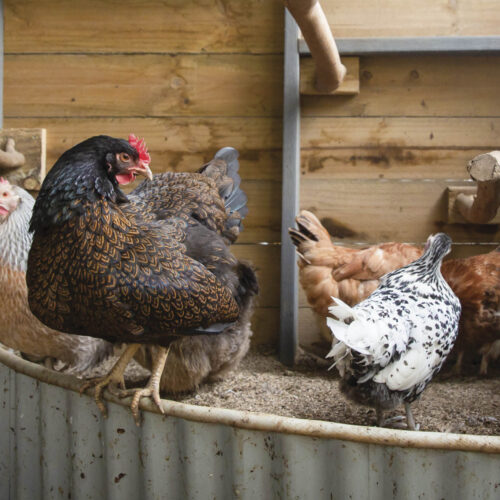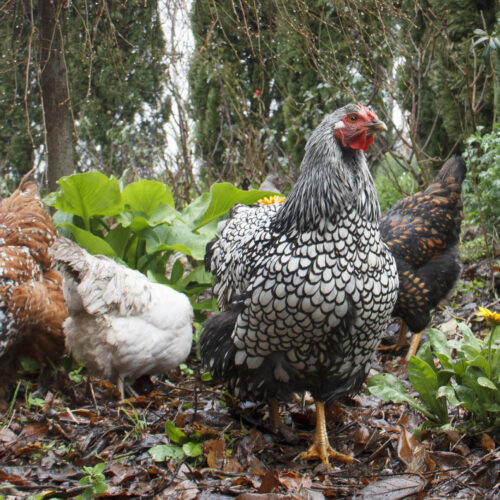Starting out with chooks
2016-05-30T03:35:08+10:00
There are many benefits to keeping chooks but be warned, says JESSAMY MILLER, they can be addictive.
Backyard chooks are ideal pets; they reward you with eggs and are full of character. It’s tempting to buy fluffy chicks or provide a home for hybrids on impulse, but birds will settle in better if you obtain feed, set up a henhouse, and research their needs first. Check local council guidelines online, and make sure neighbours are on board too.
Set up your henhouse
Hens need a secure home to protect them from weather extremes and local predators like foxes and snakes. The floor must prevent rodents or predators from digging in; I use concrete pavers covered with organic wood shavings. Ample ventilation is crucial, including in nest boxes. Site the pen facing east, in a protected spot. Make sure you can easily enter the house to clean surfaces and retrieve sick birds; crawling around is a headache. Furnish with feeder and waterer, nest boxes and perches of different heights.
Chooks can free range if it’s safe, otherwise a covered yard of wire mesh is a sensible solution; allow at least 0.5m2 per bird. Poultry need shade, cover such as bushes to hide under, and access to a dust bath. A bale of pea straw to peck or hanging greens will provide entertainment.
If you like a lie in, or come home late, an automatic henhouse door may be a good investment.
Feed your fowls
To meet their egg-laying potential, hens require a balanced ration of layer pellets or mixed grains, green feed such as grass, and a dish of medium grade shell grit they can help themselves to. Hard grit, such as small stones, is essential for digestion. A handful of grains, sprouts, garden prunings or table scraps will encourage them to scratch about, but do not represent a complete diet.
Chooks need plenty of cool clean water.
Tip: When buying new birds, ask for a sample of their current ration and feed it in decreasing amounts mixed with the new feed, as birds don’t like sudden changes.
What breed to get?
To research the best breed to suit your needs, read widely, go to a chook show to compare birds, speak to breeders, and find a fowl you really love.
Best layers: Red hybrids (ISA type), Australian Langshans, Anconas.
Best pets: Pekins, Silkies, red hybrids.
Coloured egg layers: Araucanas (blue eggs), Marans and Barnevelders (dark brown eggs).
Most decorative: Wyandottes, Australorps, Hamburghs, and many more!
Buying birds
Always buy healthy chooks – check poop for firmness, legs for raised scales, and eyes and nose for mucous before buying. Point of lay pullets, around 18–25 weeks old, represent the best value for money. Raising chicks is rewarding and fun, but will require a heat lamp, warm housing, and a plan for the inevitable roosters.
Obtain at least three fowls so that if one is struck by ill fate, you won’t be left with a lonely only – chooks are gregarious and do best in a flock. Choose numbers to fit; an established acreage will accommodate more than a smaller city backyard, where a few bantams might be plenty.
Note that roosters aren’t allowed in towns, and aren’t required for hens to lay eggs.
There are so many benefits to keeping fowls – eggs, manure and company in the garden. I’m warning you now, though, they can be addictive.
Further Reading:






